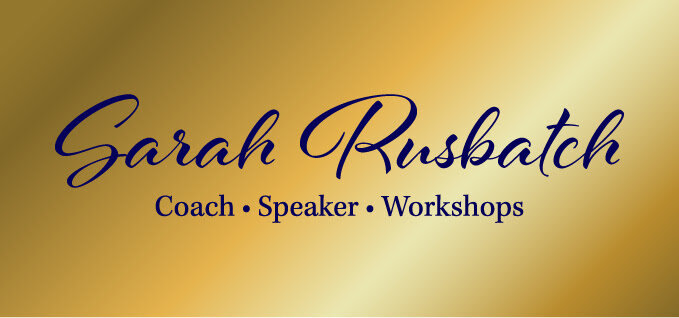Alcohol in the Workplace: The Hidden Culture We Don’t Talk About
In many professional workplaces, alcohol has long been part of the culture. Friday night drinks, client dinners, networking events, and team celebrations - all built around the idea that sharing a drink helps us bond, relax, and belong.
For decades, this has gone unquestioned. But quietly, that’s beginning to change.
More professionals are starting to ask:
Why do we need alcohol to connect?
What happens to our performance when we drink regularly?
And how can we create workplaces that genuinely support wellbeing - not just pay lip service to it?
The Unspoken Pressure to Drink
In my coaching work, I hear this story over and over - from lawyers, doctors, consultants, executives, and teachers. People who are driven, smart, and highly capable, yet privately struggling with how much they’re drinking.
They’re not what we’d traditionally label as “alcoholic.” Their careers are thriving. Their relationships look fine from the outside. But inside, there’s a quiet unease - the feeling that alcohol has too much control.
This is what we call Grey Area Drinking: the space between “social drinking” and dependency. It’s where drinking is socially accepted, even encouraged, but personally starting to feel misaligned.
In many workplaces, especially high-performance ones, alcohol is woven into the fabric of professional life. It’s how deals are made, stress is managed, and networks are built. For some, saying No feels like saying “I don’t belong.”
Even as younger generations are drinking less overall, many workplaces haven’t caught up. Research shows Gen Z is drinking around 20 % less than Millennials at the same age, yet many workplaces still don’t provide alcohol-free options at events. That creates subtle pressure - particularly in industries where image and connection matter.
Alcohol and Performance: What the Research Tells Us
There’s another side to this conversation - the physiological one.
We often think of alcohol’s impact in emotional or behavioural terms, but its effect on productivity, sleep, and cognitive function is profound.
Studies show that:
It takes around 72 hours for alcohol to completely leave your system.
Just one binge-drinking session can impair your ability to perform complex memory and decision-making tasks for up to four days.
Even one standard drink can disrupt sleep quality by up to 40 %.
That means many professionals are turning up to work slightly tired, foggy, or anxious - without connecting those symptoms to their drinking. They might not feel “hungover,” but they’re operating below their best.
Poor sleep leads to reduced focus, slower reaction times, and diminished emotional regulation - all crucial skills for leadership and collaboration.
When we think about it that way, alcohol becomes a workplace performance issue as much as a personal wellbeing one.
Why High-Achievers Are at Risk
High-achieving professionals often have traits that make them particularly vulnerable to grey area drinking. They’re driven, perfectionistic, and used to managing pressure. A glass of wine or two at the end of the day can feel like a well-deserved reward - or the only way to “switch off.”
But the truth is, alcohol doesn’t actually relieve stress; it simply numbs it. Once the effects wear off, cortisol levels rise again, creating a rebound effect that leaves us more anxious, not less.
This cycle - stress, drink, relief, anxiety - can quietly become ingrained. Over time, it chips away at confidence, sleep, energy, and emotional balance.
When I work with professionals, one of the biggest realisations is that alcohol isn’t solving their stress - it’s amplifying it. And when they take a break from drinking, their mental clarity, sleep, and self-belief improve dramatically.
The Changing Workplace Conversation
Thankfully, we’re starting to see a cultural shift. Many organisations now recognise that wellbeing is not a “nice-to-have” - it’s a key driver of performance and retention.
But there’s still a gap between what we say and what we do.
It’s common to see workplaces offering mindfulness sessions, gym discounts, or flexible hours - while still centring every social event around alcohol. That mixed message can undermine the broader wellbeing effort.
If a company truly wants to support its people, it needs to look honestly at its alcohol culture.
Ask:
Are staff expected to drink to fit in?
Do networking events always involve alcohol?
Are there visible leaders modelling healthy boundaries?
Simple changes - like offering attractive alcohol-free options, hosting daytime networking events, and celebrating success in new ways - can send a powerful message: you don’t need to drink to belong here.
Leadership Matters
Leaders play a pivotal role in shaping these norms. When senior figures choose not to drink, or openly discuss their decision to moderate, it creates permission for others to do the same.
And it’s worth remembering - leadership isn’t just about setting strategy; it’s about modelling balance, clarity, and authenticity. A culture that normalises overwork and over drinking will eventually burn people out.
On the other hand, workplaces that prioritise true wellbeing - including a healthy relationship with alcohol - foster creativity, focus, and sustainable performance.
A New Approach
This isn’t about promoting abstinence or judging those who drink. It’s about awareness, choice, and cultural change.
When we step back and question our relationship with alcohol - individually and collectively - we open up space for something better. Better sleep. Better energy. Better leadership.
Because alcohol doesn’t just affect our health; it shapes our confidence, our productivity, and the culture of our workplaces.
And when we get that culture right, everyone benefits.l movement, and sleep prep
When cravings strike, pause. Ask: “Am I truly hungry? Am I stressed? Or is this habit?” Then respond with intention. Over time, these small choices rewire your brain’s reward system, reduce cravings, and help you feel in control. Learn more in my Thrive After 40 program! Check HERE for details.

